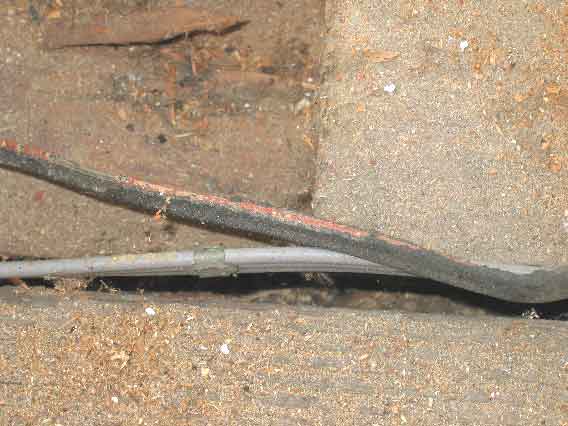
 Most VIR wiring doesn’t include an earth wire, which is sometimes run as a separate uninsulated single.
Most VIR wiring doesn’t include an earth wire, which is sometimes run as a separate uninsulated single.A good percentage of the remaining old VIR wiring is now in a dangerous condition, especially at termination points. It is common to see insulation that has fallen off, often leaving live & neutral conductors bare, unsupported and in very close proximity. In the worst cases 2 bare conductors can be found twisted round each other with nothing rigid to support them.

The outer insulation has failed on the black sheath of the cable, and in one place the insulation on the inner live wire has also cracked off. This cable is in a very poor state, and is unsafe.
The rule of thumb with old rubber wiring is
This situation is quite different to early American rubber wiring, which is usually still in sound condition, due to the use of a different rubber formulation.